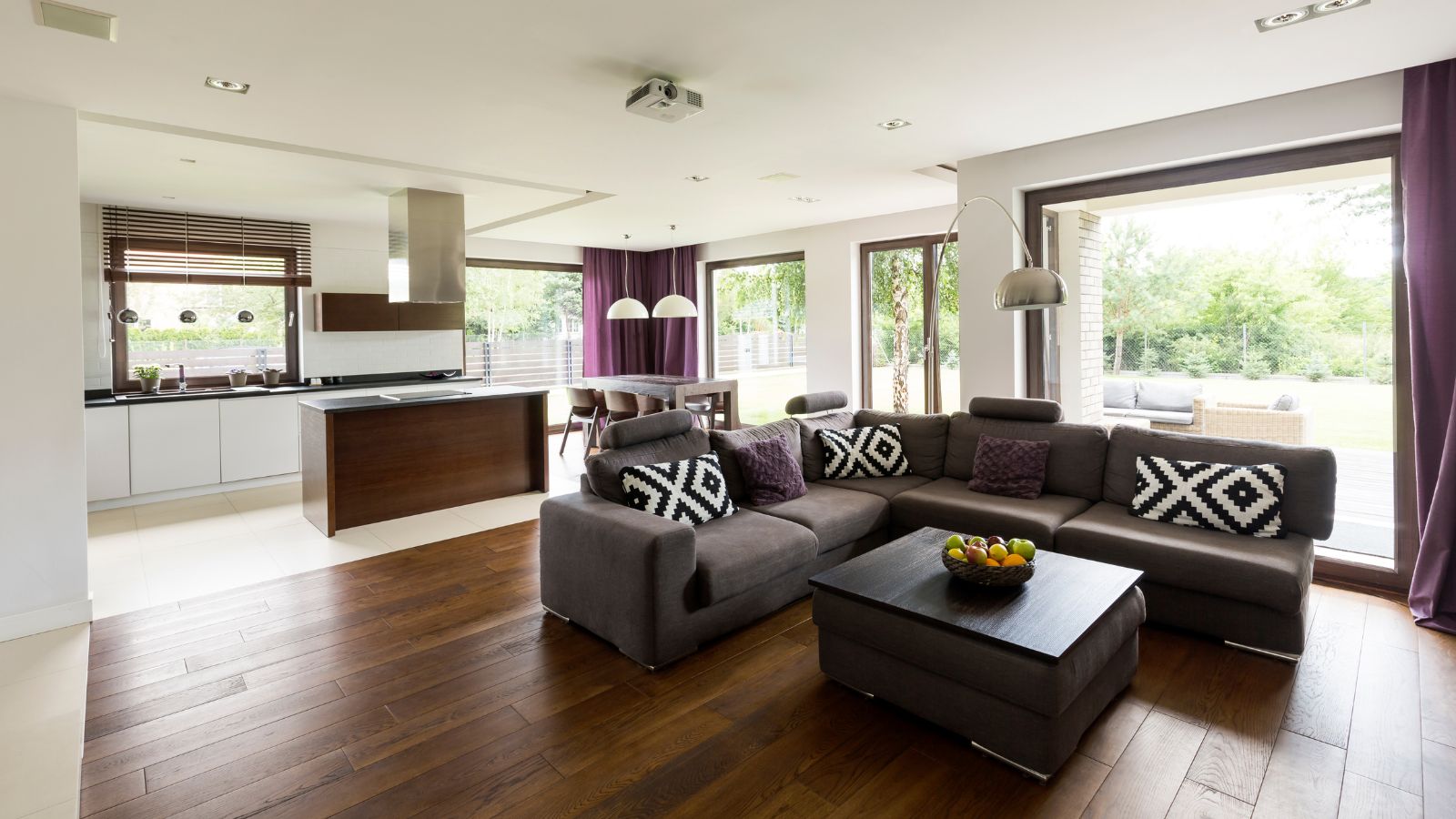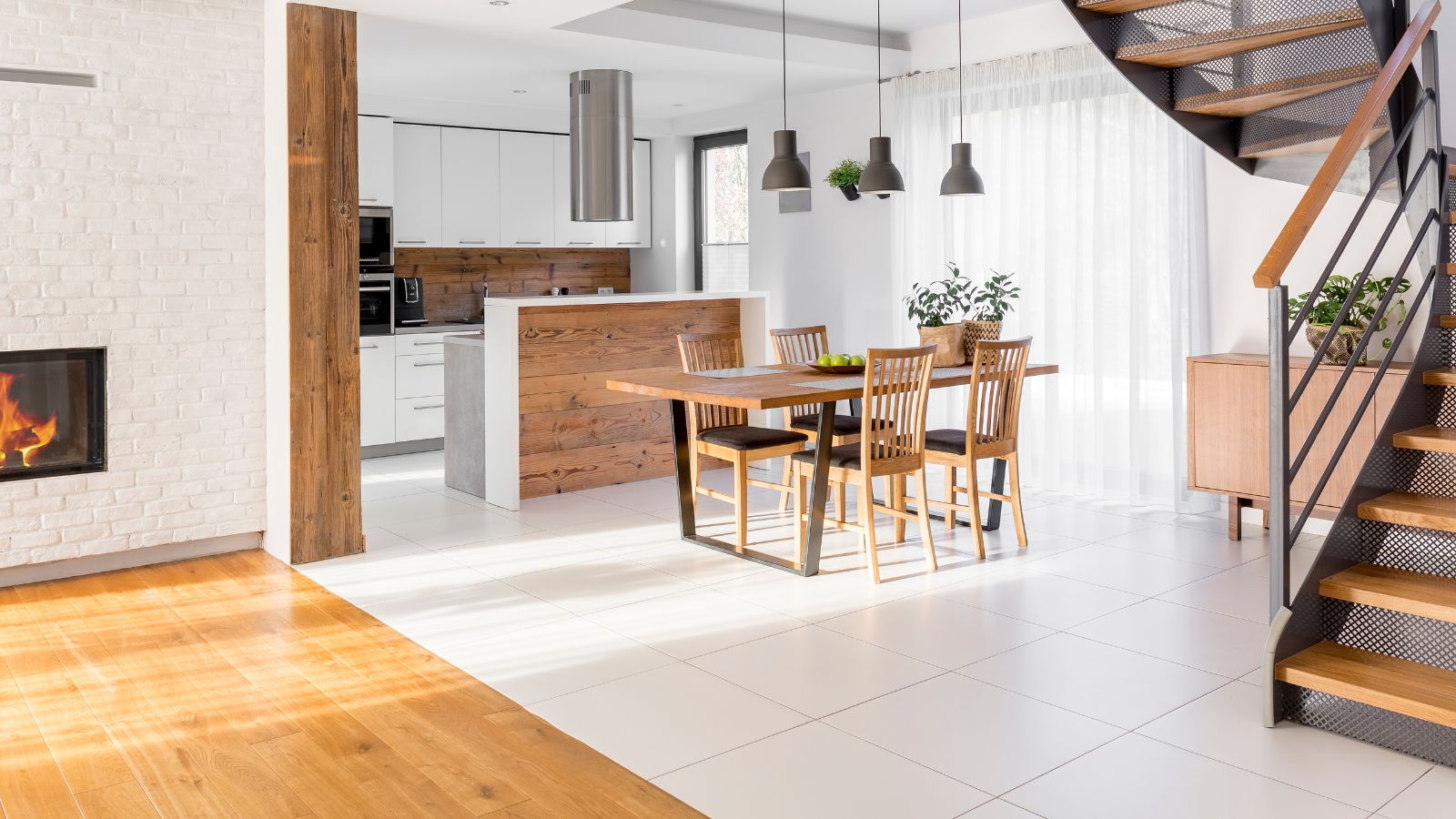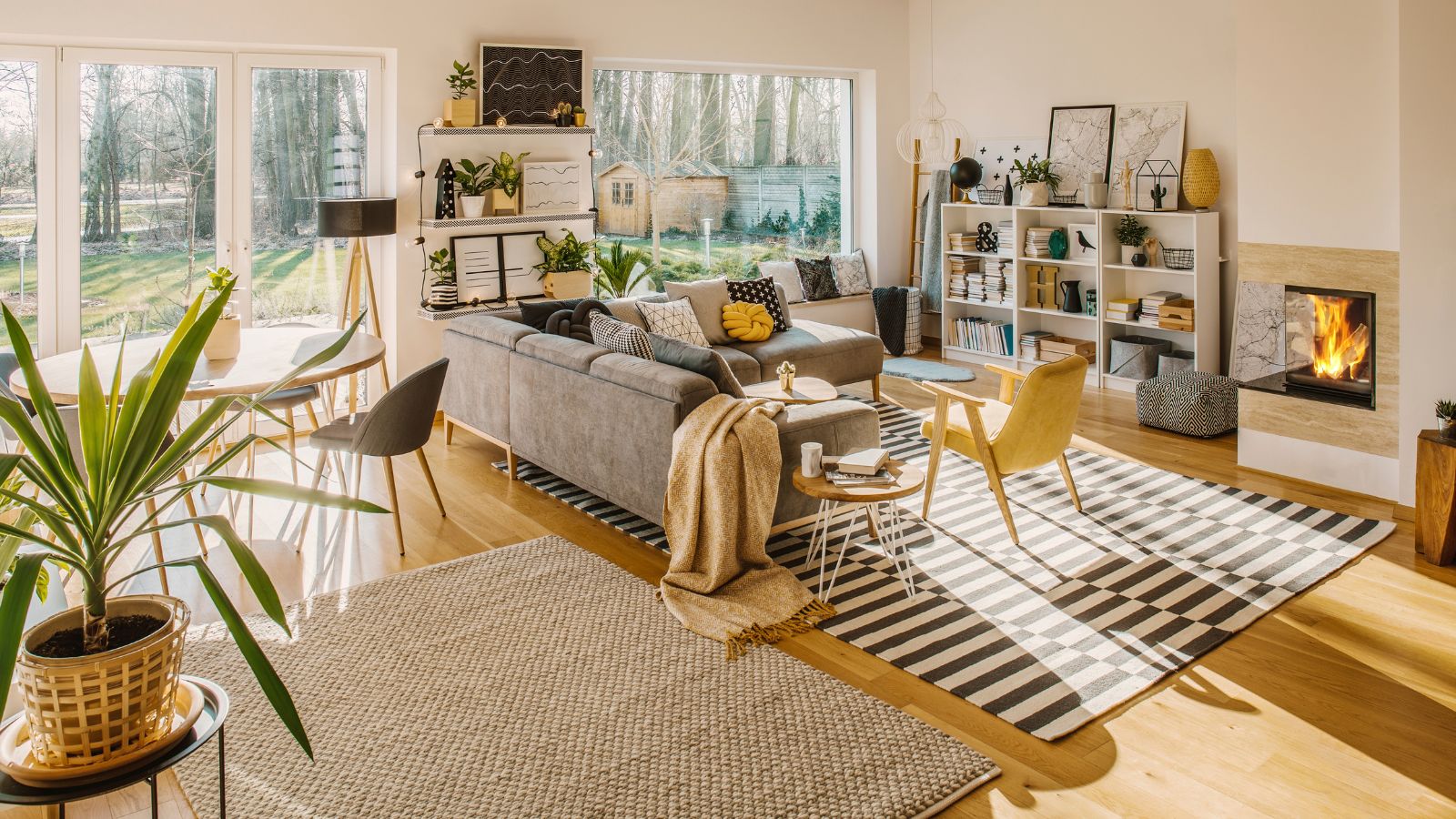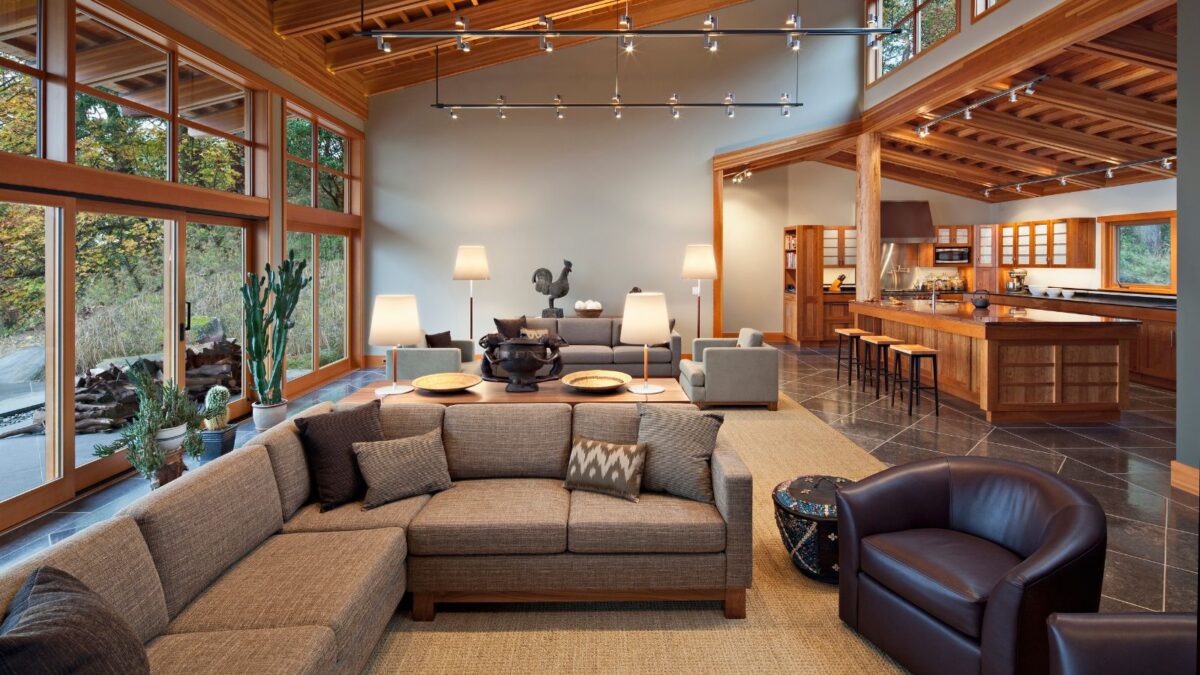Carpet, Flooring Tips, Hardwood Flooring, Laminate Flooring, Tiles, Vinyl Flooring
The Art of Mixing Flooring Types: Creating Stunning Visual Effects with Contrasting Materials
Welcome to our blog where we will explore the art of combining different flooring types to create visually striking interiors. By mixing materials such as hardwood, vinyl, laminate, tile, and carpet, you can elevate the aesthetics of your home and achieve stunning visual effects. Whether you’re a homeowner looking to upgrade your space or a design enthusiast searching for inspiration, this article will guide you through the process of mixing flooring types to create stunning interiors.
Why Mix Flooring Types?
Mixing flooring types offers a range of benefits when it comes to designing your interiors. By combining different materials, you can create unique and customized spaces that reflect your personal style. Not only does this allow you to express your creativity, but it also adds visual interest to your home. Mixing flooring types can help define areas within a room, creating a sense of flow and functionality. Moreover, by incorporating various textures and depths, you can enhance the overall design aesthetic and create a truly stunning interior.
Here are some of the key advantages of mixing flooring types:
- Unique Interiors: Mixing flooring types allows you to create a distinctive look that sets your home apart. By combining different materials such as hardwood, vinyl, laminate, tile, and carpet, you can design a space that is truly one-of-a-kind and tailored to your individual taste.
- Visual Interest: Variety is the spice of life, and the same holds true for interior design. Mixing flooring types adds visual interest and keeps your space from feeling monotonous. Contrasting materials can create a striking focal point or highlight specific areas within a room, making it visually dynamic and engaging.
- Texture and Depth: Incorporating different flooring materials adds texture and depth to your overall design. Whether it’s the smooth elegance of hardwood, the warmth of carpet, or the sleekness of tile, each material brings its own unique qualities to the space. The combination of these textures creates a multi-dimensional environment that is visually captivating.
When it comes to mixing flooring types, the possibilities are endless. From combining hardwood with a tile border to creating distinct zones with carpet and laminate, you have the freedom to experiment and create a space that reflects your personal style and taste.
Here’s an example of how mixing flooring types can transform a space:
| Room | Materials | Effect |
|---|---|---|
| Living Room | Hardwood + Carpet | Defines seating area, adds warmth and comfort |
| Kitchen | Tile + Laminate | Easy to clean, durable, and visually interesting |
| Bedroom | Carpet + Vinyl | Luxurious and cozy, easy maintenance |
By mixing flooring types in each room, you can create a cohesive yet diverse design that elevates the overall aesthetics of your home.
Understanding Different Flooring Materials
Before diving into the art of mixing flooring types, it’s important to understand the characteristics of different materials available. Each flooring material brings its own unique qualities and benefits to your space. Let’s explore some popular options:
Hardwood Flooring
Hardwood flooring provides a timeless and elegant look to any room. With its natural beauty and durability, hardwood is a popular choice for homeowners looking to create a sophisticated atmosphere. Its warm tones and rich textures add depth and charm to any interior.
Vinyl Flooring
Vinyl flooring offers versatility and easy maintenance, making it a practical choice for many households. It comes in a wide range of colours and patterns, allowing you to achieve various styles and designs. Vinyl is also highly durable, resistant to stains and scratches, making it ideal for high-traffic areas or homes with children and pets.
Laminate Flooring
Laminate flooring is known for its durability and cost-effectiveness. It replicates the look of natural materials such as hardwood or stone, offering an affordable alternative. With its easy installation and low maintenance requirements, laminate flooring is a popular choice for budget-conscious homeowners.
Tile Flooring
Tile flooring provides endless design possibilities, making it a versatile option for any room. From ceramic and porcelain to natural stone, the range of tile options allows you to create unique patterns, textures, and colour combinations. Tile flooring is also known for its durability, perfect for areas prone to moisture such as kitchens and bathrooms.
Carpet Flooring
Carpet flooring adds warmth, comfort, and sound insulation to your space. It offers a soft underfoot feel and is available in various styles, colours, and textures to match your interior decor. Carpet is especially popular for bedrooms and living areas, creating a cozy and inviting atmosphere.
Understanding the characteristics of these different flooring materials will help you make informed decisions when mixing and matching them to create stunning interior designs. Whether you prefer the natural elegance of hardwood, the versatility of vinyl, the affordability of laminate, the design possibilities of tile, or the comfort of carpet, each flooring type brings its own unique benefits to your home.

Design Principles for Mixing Flooring Types
When it comes to mixing flooring types, following certain design principles is crucial to achieve a visually harmonious space. Consider the overall colour palette, texture, pattern, and scale of the materials you choose. By aiming for visual harmony and balance, you can create a cohesive and aesthetically pleasing interior.
Here are some key design principles to keep in mind:
- Colour Palette: Select flooring materials with colours that complement each other and the overall colour scheme of the room. If you’re using a neutral colour palette, you have more flexibility to mix and match different flooring types.
- Texture: Mix flooring materials with varied textures to add depth and visual interest to your space. For example, pair a smooth and sleek hardwood floor with a textured carpet or a patterned tile.
- Pattern: Consider the patterns on your flooring materials and how they interact with each other. Mixing patterns can create a dynamic and visually engaging environment, but be mindful of striking the right balance.
- Scale: Pay attention to the scale or size of the flooring materials. Ensure that the different types of flooring you choose complement each other in terms of size and proportion. A proportionate mix creates a sense of harmony and cohesion.
Remember, experimentation is key when mixing flooring types. Don’t be afraid to try different combinations and see what works best for your space. The goal is to create a visually pleasing environment that showcases your personal style and design sensibilities.
Mixing Flooring Types by Room
Each room in your home presents unique opportunities for mixing flooring types. By combining different materials, you can create a visually stunning and functional space that suits your specific needs. From the living room to the kitchen and the bedroom to the bathroom, let’s explore how you can mix flooring types to achieve the perfect balance in each room.
Living Room
In the living room, you have the chance to create distinct seating areas and add depth to the space by using a combination of different flooring types. For example, you can define a cozy seating area by installing hardwood flooring and placing a plush carpet underneath the furniture. This not only adds visual interest but also provides a comfortable underfoot experience.
Kitchen
When it comes to the kitchen, practicality and style go hand in hand. Opt for tile flooring, as it is durable, easy to clean, and offers a wide range of design options. To add warmth and cozy vibes, incorporate an area rug in a complementary colour or pattern. This not only softens the overall look but also provides a comfortable area for standing and preparing meals.
Bedrooms
Your bedroom is a personal sanctuary, and mixing flooring types can enhance its ambiance. Consider using hardwood or laminate flooring for a timeless and elegant look. To add comfort and warmth, place a soft area rug near the bedside or under a seating area. This combination creates a cozy and inviting atmosphere, perfect for relaxation.
Bathrooms
In the bathroom, moisture resistance and safety are key factors to consider. Opt for tile flooring, as it is water-resistant and easy to clean. To prevent slipping and add a touch of luxury, incorporate small rugs or mats in strategic areas. This not only protects your feet from cold tile floors but also enhances the overall aesthetics of the space.
Remember, mixing flooring types allows you to customize each room to suit its specific purpose while creating a cohesive and visually appealing interior design. Explore different combinations, colours, and textures to achieve the perfect flooring mix for your home.
Creating Visual Transitions
When mixing different flooring types, it is essential to ensure smooth transitions between materials for a cohesive and visually appealing result. By utilizing various techniques, such as transition strips, patterns, and strategic placement of furniture and decor, you can achieve a seamless flow throughout your space, enhancing the overall aesthetics.
Transition strips are a practical solution for connecting different flooring types, providing a seamless visual transition while also ensuring a smooth and safe surface. These strips come in a variety of materials, styles, and finishes, allowing you to choose the option that best complements your design. It’s important to select transition strips that match the height and thickness of the adjoining materials to maintain a seamless flow.
Another way to create visual transitions is through the strategic use of patterns. By incorporating patterns that are harmonious or complementary, you can visually connect different flooring materials. For example, in a space where you have a transition from hardwood to tile, consider using a patterned area rug that incorporates colours from both materials to bridge the gap and create a cohesive look.
The placement of furniture and decor can also play a significant role in creating visual transitions between flooring types. By strategically positioning furniture pieces or decorative elements, you can guide the eye and create a seamless flow from one material to another. For instance, placing a large area rug in a living room with a combination of hardwood and carpet can help define and visually separate different areas while providing a smooth transition between the two flooring types.
By paying attention to these details and thoughtfully planning your transitions, you can achieve a seamless and visually appealing flooring flow throughout your space.
Sample Transition Strip Options:
| Material | Style | Description |
|---|---|---|
| Laminate | Threshold | A durable and low-profile option that provides a smooth transition between different height flooring types. |
| Metal | Square Edge | A sleek and modern option that complements contemporary interiors while providing a clean transition. |
| Wood | T-Molding | A classic choice that blends well with hardwood flooring, creating an elegant and seamless flow. |
| Tile | Reducer | An option that smoothly transitions between tile and a lower height flooring type, such as laminate or vinyl. |

The Impact of Lighting
When it comes to showcasing the beauty of your mixed flooring types, lighting plays a crucial role. By experimenting with different lighting fixtures and techniques, you can enhance the textures, colours, and patterns of your flooring, creating stunning visual effects. Proper lighting not only illuminates your space but also highlights the unique characteristics of each flooring material, bringing out their true beauty.
Consider the following tips to achieve the desired lighting effects:
- Choose the right lighting fixtures: Select lighting fixtures that complement the style and ambiance of your space. From recessed lights and pendant lights to wall sconces and floor lamps, there are various options available to create the desired lighting effects.
- Experiment with lighting angles: Play with different lighting angles to emphasize the textures and patterns of your flooring types. Direct lighting can create dramatic effects, while diffused lighting can soften the overall look.
- Utilize natural light: If possible, maximize the use of natural light in your space. Large windows and skylights can flood your room with natural light, enhancing the beauty of your mixed flooring types.
- Add accent lighting: Consider incorporating accent lighting to draw attention to specific areas or features of your flooring. This can be achieved through the use of spotlights or adjustable track lighting.
- Install dimmer switches: To create a versatile lighting scheme, install dimmer switches that allow you to adjust the brightness and intensity of your lighting fixtures. This allows for greater control over the ambiance and visual impact.
By strategically combining different lighting techniques with your mixed flooring types, you can elevate the overall aesthetic appeal of your space. The right lighting can transform a room, highlighting the beauty and enhancing the visual impact of your flooring materials.
| Lighting Technique | Effect |
|---|---|
| Recessed Lighting | Creates a sleek and modern look, illuminating the flooring evenly. |
| Pendant Lights | Adds a focal point and creates a warm and inviting atmosphere. |
| Wall Sconces | Highlights specific areas of your mixed flooring types, adding depth and visual interest. |
| Floor Lamps | Provides additional task lighting and can be used to accentuate certain areas. |
| Spotlights | Directs attention to specific features or unique patterns in your flooring. |
Experimenting with lighting effects and finding the perfect combination for your mixed flooring types can be an exciting and rewarding process. With the right lighting, you can create a visually stunning space that showcases the beauty of your flooring materials and transforms your home into a design masterpiece.
Maintenance and Longevity
When it comes to mixing flooring types, considering maintenance requirements and durability is crucial. Each material has its own specific needs to ensure its longevity and preserve its beauty.
Hardwood Flooring
Hardwood flooring exudes timeless elegance and charm, but it does require occasional refinishing to keep it looking its best. Refinishing can help remove scratches, restore shine, and extend the lifespan of your hardwood floors.
Vinyl and Laminate Flooring
For low-maintenance flooring options, vinyl and laminate are excellent choices. These materials are known for their durability and resistance to stains and scratches. Regular sweeping or vacuuming, as well as occasional mopping, will help keep vinyl and laminate floors looking pristine.
Tile and Carpet Flooring
Tile and carpet flooring may require more regular cleaning and care to maintain their appearance. Tiles should be swept or vacuumed regularly to prevent dirt buildup, while carpeting may need to be deep cleaned periodically to remove stains and odours. Following manufacturer recommendations and using appropriate cleaning methods will help ensure the longevity of these flooring types.
| Flooring Type | Maintenance Requirements |
|---|---|
| Hardwood | Occasional refinishing |
| Vinyl and Laminate | Regular sweeping, mopping, and occasional spot cleaning |
| Tile | Regular sweeping, vacuuming, and occasional mopping |
| Carpet | Regular vacuuming and periodic deep cleaning |
By understanding the maintenance needs of each flooring type, you can make informed decisions about the materials you choose and ensure a long-lasting and visually appealing result for your mixed flooring design.
Budget Considerations
While creating stunning visual effects with mixed flooring types can greatly enhance the aesthetics of your home, it’s important to consider your budget. Some materials, such as hardwood, can be quite expensive. However, there are budget-friendly options available that provide a cost-effective solution without compromising on style and quality.
- Laminate Flooring: Laminate flooring is a popular choice for budget-conscious homeowners. It offers durability, easy installation, and a wide variety of designs to mimic the look of higher-end materials like hardwood or stone.
- Vinyl Flooring: Vinyl flooring is another cost-effective option that provides versatility and durability. It comes in a range of styles, including luxury vinyl tiles and planks, which can imitate the appearance of hardwood or natural stone.
- Engineered Wood Flooring: Engineered wood flooring is a more affordable alternative to solid hardwood. It consists of a thin layer of real wood on top of high-quality plywood, making it more resistant to moisture and temperature fluctuations.
By choosing these budget-friendly flooring options, you can create a beautiful and stylish interior while staying within your desired budget.
Comparison of Flooring Materials
| Material | Cost Per Square Foot | Appearance | Maintenance |
|---|---|---|---|
| Laminate Flooring | $2 – $5 | Mimics the look of hardwood, tile, or stone | Easy to clean, resistant to stains and scratches |
| Vinyl Flooring | $1 – $7 | Available in a wide range of designs | Durable, easy to maintain |
| Engineered Wood Flooring | $3 – $10 | Real wood surface with a plywood core | Regular cleaning and maintenance required |
When considering your budget, it’s essential to weigh the cost of materials against their appearance, durability, and maintenance requirements. By opting for these cost-effective flooring materials, you can achieve a stylish and visually appealing interior without breaking the bank.

Professional Installation and Expert Advice
When it comes to mixing flooring types, achieving the best results often requires the expertise of professional installers. Professional flooring installation ensures a seamless and flawless execution of your design vision. Additionally, flooring experts can provide valuable advice on the best combinations of materials and techniques to maximize the aesthetic impact of your flooring design.
With their years of experience and in-depth knowledge, professional installers can guide you through the entire process, from material selection to the final installation. They are aware of the challenges and intricacies involved in mixing different flooring types, and can offer practical solutions and expert recommendations tailored to your unique project.
By consulting with professionals, you gain access to their extensive range of skills, ensuring that your mixed flooring types are installed meticulously and professionally. This level of craftsmanship not only enhances the overall beauty of your space but can also extend the lifespan of your flooring investments. Professional installation helps to minimize the risk of errors and potential damage, ensuring that your flooring will stand the test of time.
Investing in professional flooring installation also provides you with peace of mind, knowing that the job is being handled by trained professionals who have the necessary tools and equipment to complete the project efficiently and effectively. Their attention to detail and precision can make a significant difference in the final outcome of your design, elevating your space and creating a visually stunning result.
When seeking professional installation, you can trust the installation team at Flooring Liquidators! We’re here to help you bring your flooring vision to life.
Benefits of Professional Installation:
- Seamless installation of mixed flooring types
- Expert advice and recommendations on design and material combinations
- Extended lifespan and durability of your flooring
- Minimized risk of errors or damage during installation
- Access to specialized tools and equipment
- Peace of mind knowing the job is being handled by professionals
Conclusion
Mixing flooring types is an art that allows us to create stunning visual effects and elevate the aesthetics of our home. By understanding the characteristics of different materials, following design principles, considering factors such as lighting, maintenance, and budget, we can achieve a harmonious and visually striking interior.
When combining hardwood, vinyl, laminate, tile, and carpet, we can bring together their unique qualities to create a space that reflects our personal style. Whether it’s the timeless elegance of hardwood, the versatility of vinyl, the durability of laminate, the design possibilities of tile, or the warmth and comfort of carpet, each material adds its own charm and functionality to our interiors.
To make the most of mixing flooring types, consulting with professionals is highly recommended. Our experienced flooring installers can ensure a seamless installation and provide expert advice on the best combinations and techniques.
In conclusion, mixing flooring types allows us to create visually stunning and customized spaces that are unique to our homes. By carefully considering the characteristics of different materials, following design principles, and seeking professional advice, we can bring our creative vision to life and achieve a harmonious and captivating interior.
If you’re ready to add a mixture of different flooring types to your home, get in touch with our team at Flooring Liquidators. Our flooring experts can help you choose the best options for your space and your vision.


